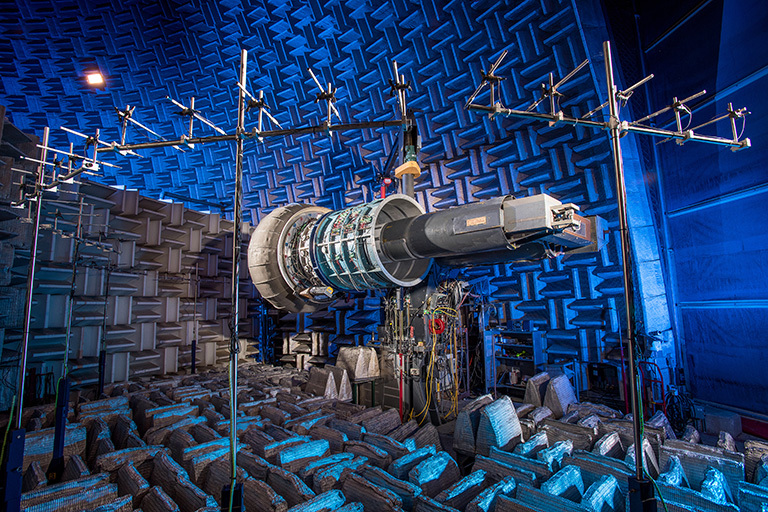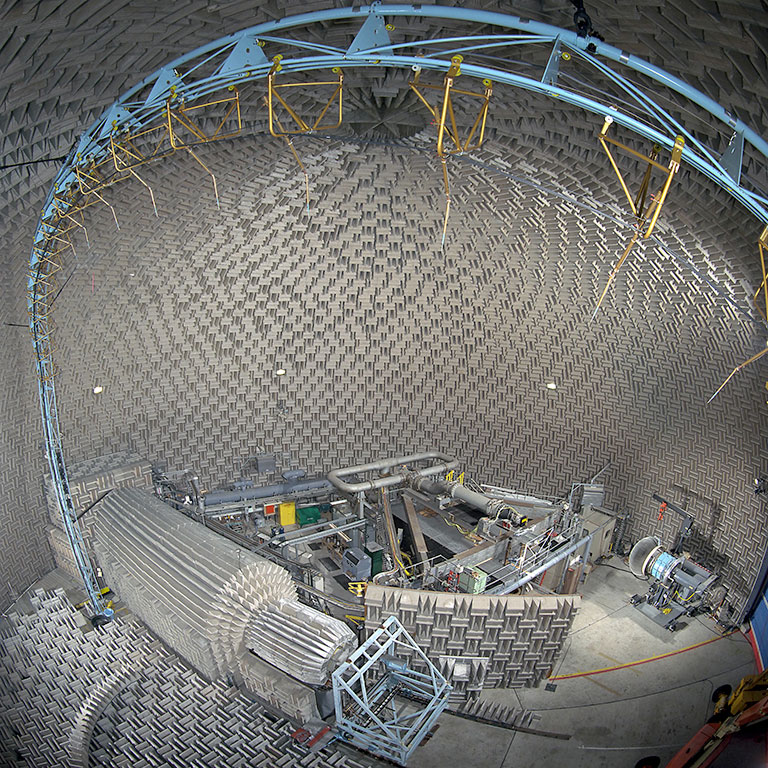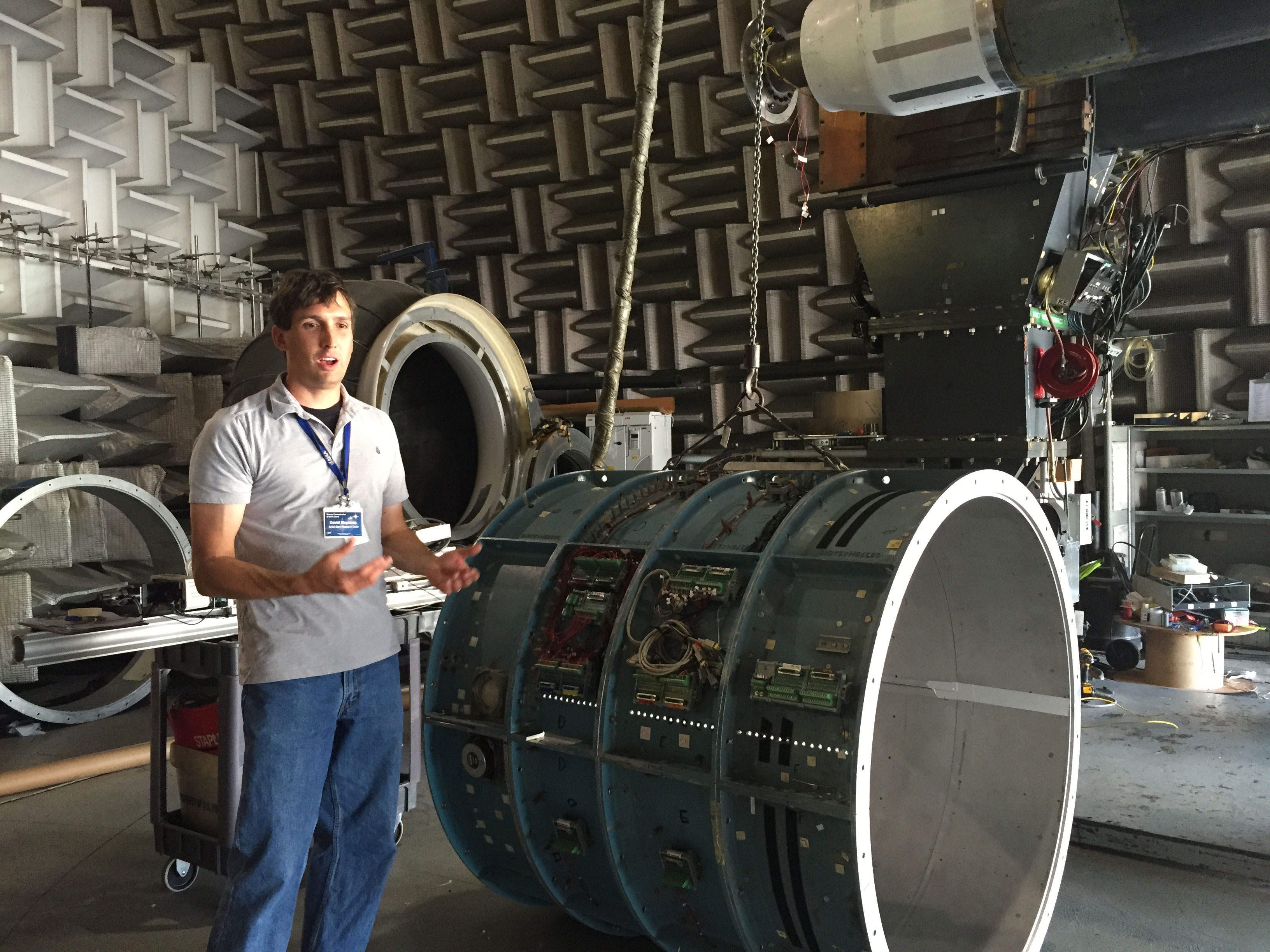Ask NASA Climate | August 27, 2015, 09:34 PDT
Cool your jets and check out NASA's jet engine test dome
The first 'A' in NASA stands for 'awesome sauce'

A jet engine in the AeroAcoustic Propulsion Laboratory at NASA's Glenn Research Center. Credit: NASA's Glenn Research Center
When you think “NASA,” obviously you think of space.
As in: Duh. Space … yeah. Space. It’s NASA.
But what about the first "A" in NASA? The acronym stands for National Aeronautics and Space Administration.
Aeronautics: the science, art and technology of making machines that fly.
Which means we’re leaders in developing spacecraft and aircraft. And since the number of people flying on commercial passenger aircraft is so enormous, any NASA research that can support even small improvements in airplanes can be extremely valuable.One important improvement engineers at NASA are working on is increasing the fuel efficiency of jet engines. Since fossil fuels are responsible for adding carbon dioxide to our atmosphere and aircraft are very dependent on high quality liquid fuels, making planes more efficient would be awesome sauce.
To learn more about aeronautics at NASA, I met up with David Stephens, a research aerospace engineer. He talked to me about some of his work and gave me an inside tour of NASA’s Glenn Research Center in Cleveland, Ohio.
See, as Stephens and his colleagues work to improve the fuel efficiency of aircraft, they have to simultaneously keep engine noise down because fuel efficiency equals: Woohoo! And airplane noise equals: Woohoo! Yay! Crank it up for a few seconds! (And then eeew, make it stop!)
The first stop on our tour of Glenn was the AeroAcoustic Propulsion Laboratory, a 65-foot radius geodesic dome, which looks ginormous from the outside. Inside the dome, the walls are completely covered with thousands of silver colored wedges arranged in a complex pattern. Each of the wedges is about the size of a bed pillow. Everything is silver and shiny. I tilted my head back and looked all the way up to the very high ceiling. It definitely felt like the type of place where new flight technology gets created and tested.

Some engineering problems can be solved by doing calculations on computers, but not noise. When you want to make a jet engine quieter, sooner or later you’re going to have to go out there and listen to it. And this AeroAcoustic dome is definitely one of the best places to do just that.
To develop the latest breakthrough technology, NASA concept aircraft must always push the boundaries. This means when a new concept is proposed, Stephens' group will be asked, "What does it sound like?" If you’re like me, you might suspect that the noisiest part of a jet engine is the combustion, the burning bits. But it turns out the culprit for most of the noise making for modern commercial aircraft engine is usually the fan.
My tour of Glenn Research Center at Lewis Field also included:
Find out more about NASA’s AeroAcoustic Propulsion Lab here.
Find out more about all NASA Glenn Research Facilities here.

